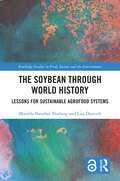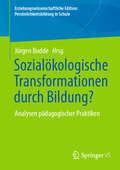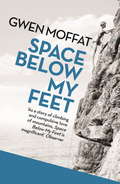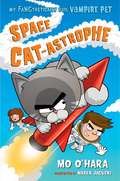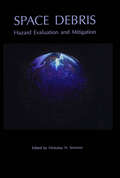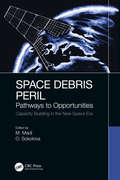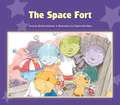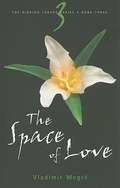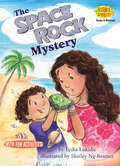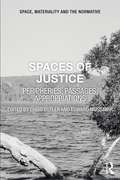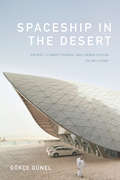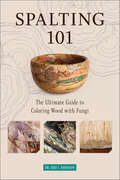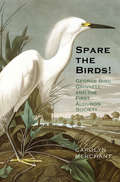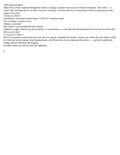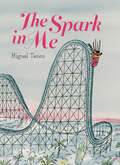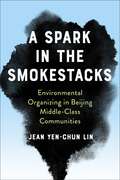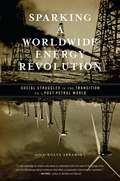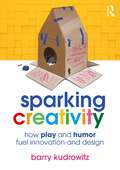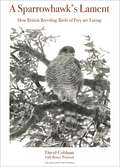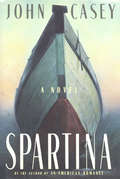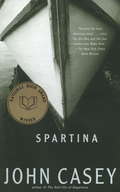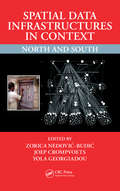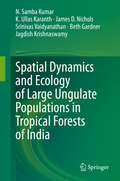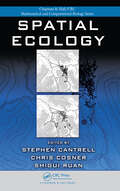- Table View
- List View
The Soybean Through World History: Lessons for Sustainable Agrofood Systems (Routledge Studies in Food, Society and the Environment)
by Matilda Baraibar Norberg Lisa DeutschThis book examines the changing roles and functions of the soybean throughout world history and discusses how this reflects the complex processes of agrofood globalization. The book uses a historical lens to analyze the processes and features that brought us to the current global configuration of the soybean commodity chain. From its origins as a peasant food in ancient China, today the protein-rich soybean is by far the most cultivated biotech crop on Earth; used to make a huge variety of food and industrial products, including animal feed, tofu, cooking oil, soy sauce, biodiesel and soap. While there is a burgeoning amount of literature on how the contemporary global soy web affects large tracts of our planet’s social-ecological systems, little attention has been given to the questions of how we got here and what alternative roles the soybean has played in the past. This book fills this gap and demonstrates that it is impossible to properly comprehend the contemporary global soybean chain, or the wider agrofood system of which it is a part, without looking at both their long and short historical development. However, a history of the soybean and its changing roles within equally changing agrofood systems is inexorably a history about globalization. Not only does this book map out where soybeans are produced, but also who governs, wields power and accumulates capital in the entire commodity chain from inputs in production to consumption, as well as identifying the institutional context the global commodity chain operates within. The book concludes with a discussion of the main challenges and contradictions of the current soy regime that could trigger its rupture and end. This book is essential reading for students, practitioners and scholars interested in agriculture and food systems, global commodity chains, globalization, environmental history, economic history and social-ecological systems.
Sozialökologische Transformationen durch Bildung?: Analysen pädagogischer Praktiken (Erziehungswissenschaftliche Edition: Persönlichkeitsbildung in Schule)
by Jürgen BuddeDer Band dokumentiert aktuelle empirische Befunde rekonstruktiver Forschungsprojekte zur Frage, welchen Beitrag Bildung zu sozialökologischen Transformationen leisten kann. Damit wird auf der Basis hervorragender studentischer Abschlussarbeiten empirisch beleuchtet, was zumeist lediglich normative Forderung ist, nämlich der Beitrag der Schule zu Nachhaltigkeit. Die Beiträge analysieren schulische Bedingungen für, sowie schulische Praxis von Nachhaltigkeitsbildung. Darüber hinaus wird Nachhaltigkeitsbildung jenseits von Schule thematisiert.
Space Below My Feet
by Gwen MoffatA classic mountaineering memoir by one of the UK's foremost female climbers.'A story of climbing and compulsive love of mountains ... magnificent' OBSERVERIn 1945, when Gwen Moffat was in her twenties, she deserted from her post as a driver and dispatch rider in the Army and went to live rough in Wales and Cornwall, climbing and living on practically nothing. She hitch-hiked her way around, travelling from Skye to Chamonix and many places in between, with all her possessions on her back, although these amounted to little more than a rope and a sleeping bag.When the money ran out, she worked as a forester, went winkle-picking on the Isle of Skye, acted as the helmsman of a schooner and did a stint as an artist's model. And always there were the mountains, drawing her away from a 'proper' job.Throughout this unique story, there are acutely observed accounts of mountaineering exploits as Moffat tackles the toughest climbs and goes on to become Britain's leading female climber - and the first woman to qualify as a mountain guide.
Space Cat-astrophe (My FANGtastically Evil Vampire Pet #2)
by Mo O'Hara Marek JaguckiIn the second book of this FANGtastic spin-off of Mo O'Hara's New York Times—bestselling My Big Fat Zombie Goldfish chapter book series, an aspiring evil scientist and his mostly evil (and totally forbidden) vampire kitten blast off to Evil Scientist Space Camp. My epic summer has just gotten even more epic, because Evil Scientist Summer Camp just turned into Evil Scientist Space Camp! AND it will be led by the totally epic evil astronaut Neil Strongarm! Who is looking for evil apprentices for his next space mission! Which means that I could totally go into SPACE!!!I’m already well on my way to Evil Emperor of the Camp. Winning this competition should be easy. Okay, so maybe I didn’t expect Geeky Girl to be quite so good at being evil, but I know I’ve got this. All I need is a plan. Hmmm . . . I wonder if you can take evil kittens on space stations.Let the Epic Evil Spaceness begin.Signed, The Great and Powerful Mark
Space Debris: Hazard Evaluation and Debris
by Nickolay N. SmirnovWhen the first sputnik was launched and the space era began, few gave thought to the possible negative impact of putting satellites into orbit. In fact, man's space activity has led to the formation of a new media named "space debris," i.e. man-made objects and their fragments launched into space, currently inactive and no longer serving any useful
Space Debris Peril: Pathways to Opportunities
by M. Madi and O. Sokolova"This book provides up-to-date knowledge of space debris and valuable insights on how to grapple with this issue from legal, technical, economical and societal aspects. I would strongly recommend that everyone who is working on space development and utilizations and even non-specialists once read this book and think over how human being should be faced with this issue." –Prof. Shinichi Nakasuka, University of Tokyo, Japan Space Debris Peril: Pathways to Opportunities takes readers through the wide spectrum of problems created by space debris – including technical, political, legal and socio-economical aspects – and suggests ways to mitigate its negative consequences and create new opportunities. With chapter contributions from authors at world-renowned universities, private or public entities, and research institutes active in the field of space debris mitigation, space policy and law, risk and resilience, liability and insurance, this book provides a comprehensive introduction to the subject helping the reader to grasp the whole picture of the current space debris remediation challenges. This book will be of interest to the scientific communities, policy makers, business developers, (re)insurers and international standards developers for space operations and orbital debris mitigation. Also, it should appeal to a broader audience among non-specialists in various sectors and the general public. Key features: Brings together interdisciplinary perspectives on the topic in one, cohesive book Chapter contributions from specialists in this interdisciplinary field from around the globe Up-to-date information with the latest developments
The Space Fort (Galaxy Girl #Set 1)
by Michele DufresneSpaceboy and Galaxy Girl made a little fort in a tree.
The Space of Love (The Ringing Cedars Series #3)
by Vladimir Megré John Woodsworth Leonid SharashkinNothing you have read in Books 1 and 2 has prepared you for Book 3--The Space of Love.
Space, Place, and Landscape in Ancient Greek Literature and Culture
by Kate Gilhuly Nancy WormanThis book brings together a collection of original essays that engage with cultural geography and landscape studies to produce new ways of understanding place, space, and landscape in Greek literature from the fifth and fourth centuries BCE. The authors draw on an eclectic collection of contemporary approaches to bring the study of ancient Greek literature into dialogue with the burgeoning discussion of spatial theory in the humanities. The essays in this volume treat a variety of textual spaces, from the intimate to the expansive: the bedroom, ritual space, the law courts, theatrical space, the poetics of the city, and the landscape of war. And yet, all of the contributions are united by an interest in recuperating some of the many ways in which the ancient Greeks in the archaic and classical periods invested places with meaning and in how the representation of place links texts to social practices.
The Space Rock Mystery: Rocks And Minerals (Science Solves It!)
by Lydia LukidisSolve kid-sized dilemmas and mysteries with SCIENCE SOLVES IT! These fun science books for kids ages 5–8 blend clever stories with real-life science. Why did the dog turn green? Can you control a hiccup? Is that a UFO? Find the answers to these questions and more as kid characters dive into physical, life, and earth sciences. "This rock is totally from outer space!" At least that&’s what Kaleo thinks when he picks up an amazing rock on the beach. Finding out more will lead him and his sister, Leia, on an adventure they&’ll never forget! Books in this perfect STEM series will help kids think like scientists and get ahead in the classroom. Activities and experiments are included in every book!
Spaces of Justice: Peripheries, Passages, Appropriations
by Chris Butler and Edward MussawirThis collection is inspired by the transdisciplinary possibilities posed by the connections between space and justice. Drawing on a variety of theoretical influences that include Henri Lefebvre, Gilles Deleuze and Felix Guattari, Doreen Massey, Gillian Rose, Walter Benjamin, Elias Canetti, Antonio Negri and Yan Thomas, the contributors to this book conduct a series of jurisprudential, aesthetic and political inquiries into ‘just’ modes of occupying space, and the ways in which space comes under the signs of law and justice. Bringing together leading critical legal scholars with theorists and practitioners from other disciplines within the humanities, Spaces of Justice investigates unexplored associations between law and architectural theory, the visual arts, geography and cultural studies. The book contributes to the ongoing destabilisation of the boundaries between law and the broader humanities and will be of considerable interest to scholars and students with an interest in the normative dimensions of law’s ‘spatial turn’.
Spaceship in the Desert: Energy, Climate Change, and Urban Design in Abu Dhabi (Experimental Futures)
by Gökçe GünelIn 2006 Abu Dhabi launched an ambitious project to construct the world’s first zero-carbon city: Masdar City. In Spaceship in the Desert Gökçe Günel examines the development and construction of Masdar City's renewable energy and clean technology infrastructures, providing an illuminating portrait of an international group of engineers, designers, and students who attempted to build a post-oil future in Abu Dhabi. While many of Masdar's initiatives—such as developing a new energy currency and a driverless rapid transit network—have stalled or not met expectations, Günel analyzes how these initiatives contributed to rendering the future a thinly disguised version of the fossil-fueled present. Spaceship in the Desert tells the story of Masdar, at once a “utopia” sponsored by the Emirati government, and a well-resourced company involving different actors who participated in the project, each with their own agendas and desires.
Spalting 101: The Ultimate Guide to Coloring Wood with Fungi
by Dr. Seri RobinsonA step-by-step guide to DIY spalting—harnessing fungi to create spectacular colors and lines in woodLeads beginners to success and offers spalting veterans fascinating info to improve their workWhether spalting wood in your yard, your bathroom, or a lab, save time and frustration
Spare the Birds!: George Bird Grinnell and the First Audubon Society
by Carolyn MerchantAn engaging history of the founding of one of the world's most popular environmental organizations, the Audubon Society In 1887, a year after founding the Audubon Society, explorer and conservationist George Bird Grinnell launched Audubon Magazine. The magazine constituted one of the first efforts to preserve bird species decimated by the women's hat trade, hunting, and loss of habitat. Within two years, however, for practical reasons, Grinnell dissolved both the magazine and the society. Remarkably, Grinnell's mission was soon revived by women and men who believed in it, and the work continues today. In this, the only comprehensive history of the first Audubon Society (1886-1889), Carolyn Merchant presents the exceptional story of George Bird Grinnell and his writings and legacy. The book features Grinnell's biographies of ornithologists John James Audubon and Alexander Wilson and his editorials and descriptions of Audubon's bird paintings. This primary documentation combined with Carolyn Merchant's insightful analysis casts new light on Grinnell, the origins of the first Audubon Society, and the conservation of avifauna.
Spark
by Sarah Beth DurstStorm beasts and their guardians create perfect weather every day, and Mina longs for a storm beast of her own. But when the gentle girl bonds with a lightning beast—a creature of fire and chaos—everyone’s certain it’s a mistake. Everyone but Mina and the beast himself, Pixit. Quickly enrolled in lightning school, Mina struggles to master a guardian’s skills, and she discovers that her country's weather comes at a devastating cost—a cost powerful people wish to hide. Mina’s never been the type to speak out, but someone has to tell the truth, and, with Pixit’s help, she resolves to find a way to be heard.
The Spark in Me
by Miguel TancoA young girl sees the world differently in this beautiful picture book exploration of physics.Everyone has their thing. Some people are dreamers. Some people are practical. Some people like to invent things. Our heroine isn't sure what her thing is. But she knows she has a lot of questions, like could she be faster than her own echo? If she built a giant paper boat, could she sail the sea? And how strong would she need to be to launch another kid into orbit from a teeter-totter? Eventually, she learns that all her questions have to do with one thing: physics!In this thoughtful and gorgeous ode to the search for knowledge and finding one's passion, phsyics becomes a way for our heroine to ponder the magic of the world.
A Spark in the Smokestacks: Environmental Organizing in Beijing Middle-Class Communities
by Jean Yen-chun LinEnvironmental organizing in Beijing emerged in an unlikely place in the 2000s: new gated residential communities. After rapid population growth and housing construction led to a ballooning trash problem and overflowing landfills, many first-time homeowners found their new neighborhoods facing an unappetizing prospect—waste incinerator projects slated for their backyards.Delving into the online and offline conversations of communities affected by the proposed incinerators, A Spark in the Smokestacks demonstrates how a rising middle class acquires the capacity for organizing in an authoritarian context. Jean Yen-chun Lin examines how urban residents create civic life through everyday associational activities—learning to defend property rights, fostering participation, and mobilizing to address housing-related grievances. She shows that homeowners cultivated petitioning skills, informational networks, and community leadership, which they would later deploy against incinerator projects. To interact with government agencies, they developed citizen science–based tactics, a middle-class alternative to disruptive protests. Homeowners drew on their professional connections, expertise, and fundraising capabilities to produce reports that boosted their legitimacy in city-level dialogue. Although only one of the three incinerator projects Lin follows was ultimately canceled, some communities established durable organizations that went on to tackle other environmental problems.Drawing on interviews, participant observation, and ethnography, A Spark in the Smokestacks casts urban Chinese communities as “schools of democracy,” in which residents learn civic skills and build capacity for collective organizing. Through compelling case studies of local activism, this book sheds new light on the formation of civil society and social movements more broadly.
Sparking a Worldwide Energy Revolution
by Kolya AbramskyAs the earth's carrying capacity continues to be stressed, the question of renewable energies is no longer whether, but when and by whom. Climate change and peak oil have hit the mainstream. Kolya Abramsky's collection maps the world's energy sector and shows how addressing these challenges necessitates an analysis of our economic priorities. Solutions must include massive shifts in our use of technologies and, most importantly, a democratization of the economic landscape based on broad new coalitions.With four distinct sections-Oil Makes the World Go 'Round; From Petrol to Renewable Energies; Struggle Over Choice of Energy Sources and Technologies; and Possible Futures-and over fifty essays from approximately twenty countries, there's nothing like Sparking a Worldwide Energy Revolution to address our global energy crisis.The different chapters bring together a wealth of organizational and analytical experience from across the different branches of the energy sector, both conventional and renewable. Contributors include the following organizations and individuals: China Labour Bulletin (Hong Kong/China), Energy Watch Group (Germany), Focus on the Global South (Thailand), Integrated Sustainable Energy and Ecological Development (India), Public Services International Research Unit (United Kingdom), World Information Service on Energy (Netherlands), Preben Maegaard, and Hermann Scheer.Kolya Abramsky is a former secretariat of the World Wind Energy Institute, based in Denmark, a pioneering country in renewable energy. He is currently a research fellow at the Institute for Advanced Studies on Science, Technology and Society in Austria, and is pursuing a PhD in sociology at State University of New York, Binghamton.
Sparking Creativity: How Play and Humor Fuel Innovation and Design
by Barry KudrowitzBlending popular culture and design theory, framed by a decade of scholarly research, this book highlights how play and humor fuel innovation. Now, more than ever, we are in need of creative solutions to global problems, but creative skills and abilities decline over time without intervention and practice. Sparking Creativity provides empirically supported methods for embracing the often-trivialized domains of play and humor to increase our creativity. It shows that topical examples, such as Seinfeld's humor, the Apples to Apples board game, and the Adventure Time cartoon series, are more closely related to innovation than you might first think. The book is organized into five main parts, each containing short, engaging subsections and informative, playful, and colorful illustrations to demonstrate concepts. Written in a humorous and accessible style, this book is aimed toward creative-minded entrepreneurs, designers, engineers, industry leaders, parents, educators, and students. It encourages a playful approach throughout a design process to produce truly innovative solutions.
A Sparrowhawk's Lament: How British Breeding Birds of Prey Are Faring (WILDGuides #71)
by David CobhamBritain is home to fifteen species of breeding birds of prey, from the hedgerow-hopping Sparrowhawk to the breathtaking White-tailed Eagle. In this handsomely illustrated book, acclaimed British filmmaker and naturalist David Cobham offers unique and deeply personal insights into Britain's birds of prey and how they are faring today. He delves into the history of these magnificent birds and talks in depth with the scientists and conservationists who are striving to safeguard them. In doing so, he profiles the writers, poets and filmmakers who have done so much to change the public's perception of birds of prey. There are success stories—five birds of prey that were extinct have become reestablished with viable populations—but persecution is still rife. Featuring drawings by famed wildlife artist Bruce Pearson, this book reveals why we must cherish and celebrate our birds of prey, and why we neglect them at our peril.
Spartina
by John CaseyA classic tale of a man, a boat, and a storm, Spartina is the lyrical and compassionate story of Dick Pierce, a commercial fisherman along the shores of Rhode Island's Narragansett Bay. A kind, sensitive, family man, he is also prone to irascible outbursts against the people he must work for, now that he can no longer make his living from the sea.<P><P> Pierce's one great passion, a fifty-foot fishing boat called Spartina, lies unfinished in his back yard. Determined to get the funds he needs to buy her engine, he finds himself taking a foolish, dangerous risk. But his real test comes when he must weather a storm at sea in order to keep his dream alive. Moving and poetic, Spartina is a masterly story of one man's ongoing struggle to find his place in the world.<P> Winner of the 1989 National Book Award
Spartina
by John D. CaseyWinner of the 1989 National Book AwardA classic tale of a man, a boat, and a storm, Spartina is the lyrical and compassionatestory of Dick Pierce, a commercial fisherman along the shores of Rhode Island'sNarragansett Bay. A kind, sensitive, family man, he is also prone to irascible outburstsagainst the people he must work for, now that he can no longer make his living from thesea.Pierce's one great passion, a fifty-foot fishing boat called Spartina, lies unfinished inhis back yard. Determined to get the funds he needs to buy her engine, he finds himselftaking a foolish, dangerous risk. But his real test comes when he must weather a storm atsea in order to keep his dream alive. Moving and poetic, Spartina is a masterly story ofone man's ongoing struggle to find his place in the world.
Spatial Data Infrastructures in Context: North and South
by Zorica Nedović-Budić Joep Crompvoets Yola GeorgiadouIn the wake of the so-called information technology revolution, many stakeholders from the public and private sectors (including citizens) have indeed grown accustomed to the promise and usability of spatial data infrastructures (SDI) for data access, use, and sharing. With contributions from international experts, this book presents cutting edge Spatial Data Infrastructure (SDI) research on information technology, systems, and infrastructures that is theoretically-based and empirically supported. It examines the complexities involved in the establishments of SDIs in the Northern and Southern hemispheres and use of SDIs in a variety of cultural, societal, and institutional contexts. The focus is on urban and regional levels where socio-economic and environmental sustainability is realized.
Spatial Dynamics and Ecology of Large Ungulate Populations in Tropical Forests of India
by N. Samba Kumar K. Ullas Karanth James D. Nichols Srinivas Vaidyanathan Beth Gardner Jagdish KrishnaswamyLarge ungulates in tropical forests are among the most threatened taxa of mammals. Excessive hunting, degradation of and encroachments on their natural habitats by humans have contributed to drastic reductions in wild ungulate populations in recent decades. As such, reliable assessments of ungulate-habitat relationships and the spatial dynamics of their populations are urgently needed to provide a scientific basis for conservation efforts. However, such rigorous assessments are methodologically complex and logistically difficult, and consequently many commonly used ungulate population survey methods do not address key problems. As a result of such deficiencies, key parameters related to population distribution, abundance, habitat ecology and management of tropical forest ungulates remain poorly understood. This book addresses this critical knowledge gap by examining how population abundance patterns in five threatened species of large ungulates vary across space in the tropical forests of the Nagarahole-Bandipur reserves in southwestern India. It also explains the development and application of an innovative methodology – spatially explicit line transect sampling – based on an advanced hierarchical modelling under the Bayesian inferential framework, which overcomes common methodological deficiencies in current ungulate surveys. The methods and results presented provide valuable reference material for researchers and professionals involved in studying and managing wild ungulate populations around the globe.
Spatial Ecology (Chapman & Hall/CRC Mathematical Biology Series)
by Stephen Cantrell Chris Cosner Shigui RuanExploring the relationship between mathematics and ecology, Spatial Ecology focuses on some important emerging challenges in the field. These challenges consist of understanding the impact of space on community structure, incorporating the scale and structure of landscapes into mathematical models, and developing connections between spatial ecology
